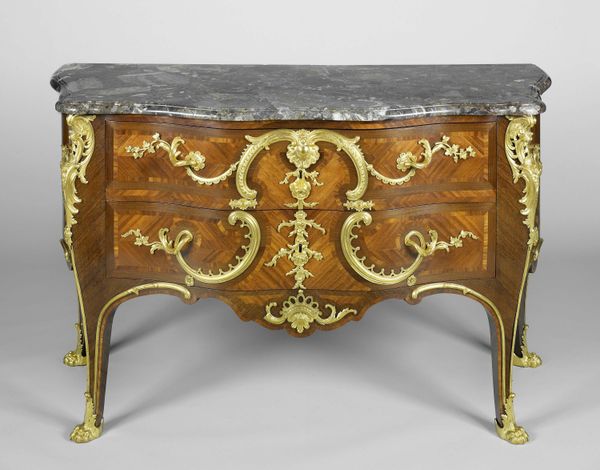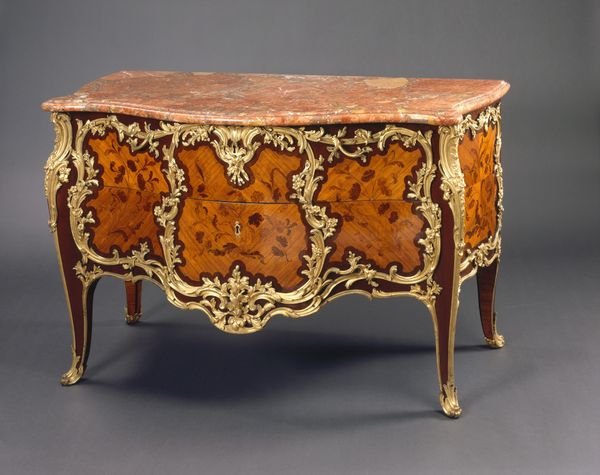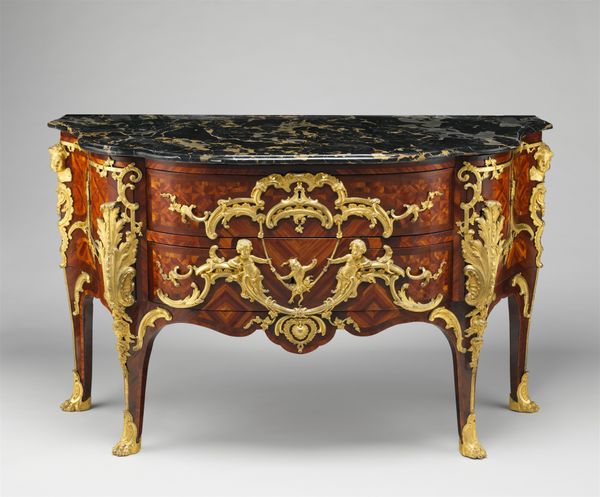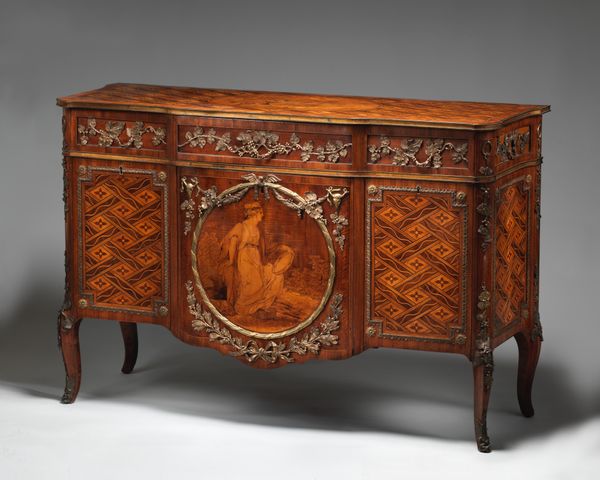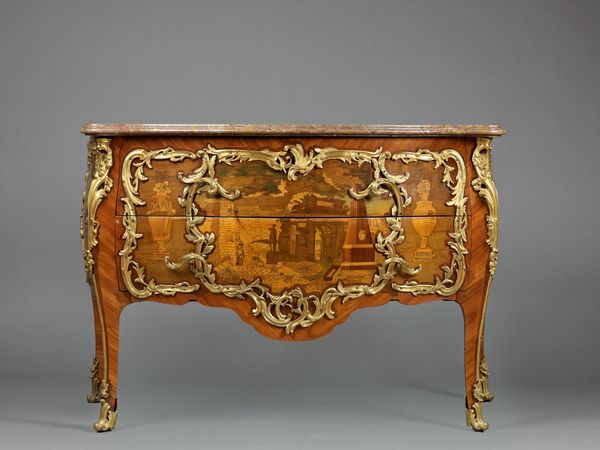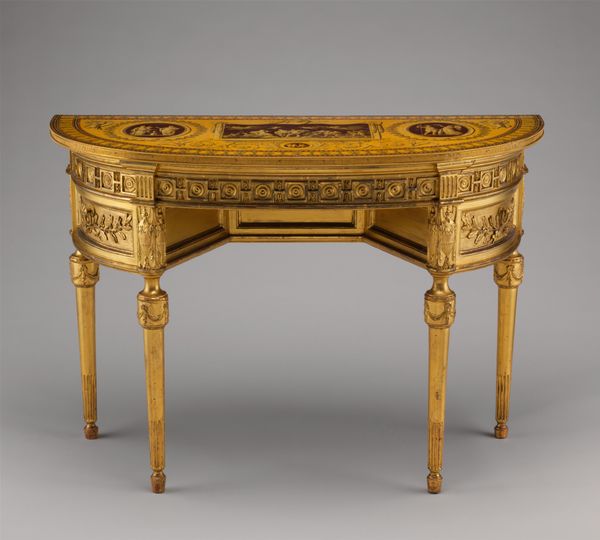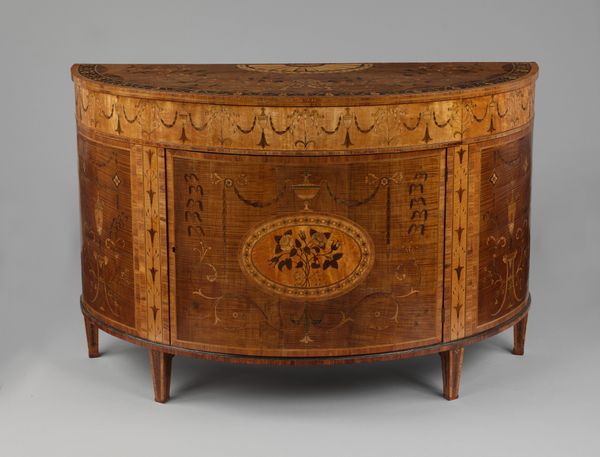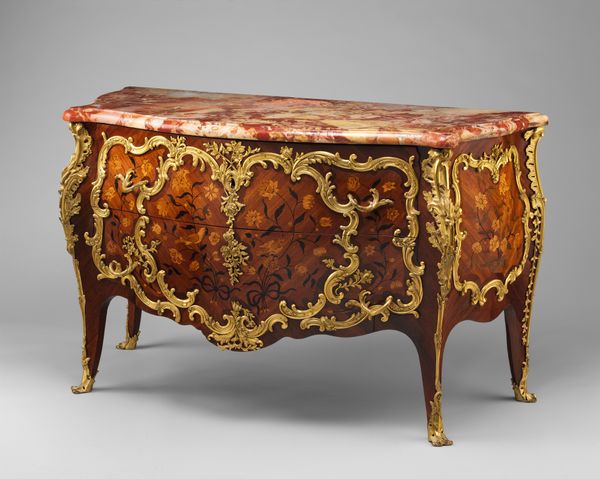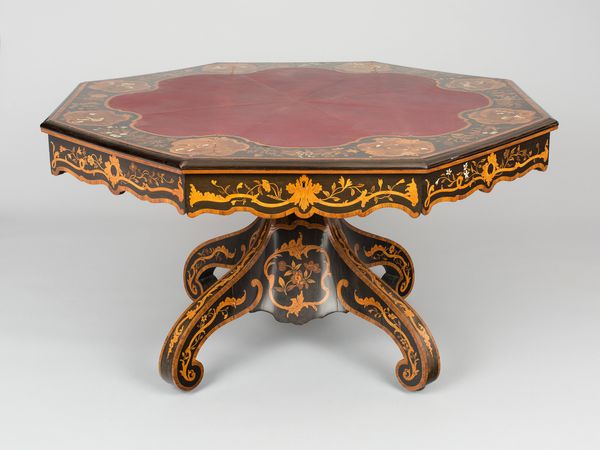
Commode met twee laden en een deur aan de zijkanten. Marqueterieversiering met ruiten, rozetten en vlechtwerk en midden twee duiven, bloemwerk, boog, toorts en pijlenkoker. c. 1765 - 1770
0:00
0:00
matthijshorrix
Rijksmuseum
wood, marble
#
wood texture
#
decorative element
#
furniture
#
wood
#
decorative-art
#
marble
#
rococo
Dimensions: height 87.5 cm, width 166.5 cm, depth 65.5 cm, width 164.5 cm, depth 62.0 cm, weight 73.4 kg
Copyright: Rijks Museum: Open Domain
Curator: The sweeping curves and playful details of this commode practically sing Rococo. Editor: It's delightful! It’s all curves and ornamentation, like a baroque explosion captured in miniature. A sense of opulence without being overtly aggressive. Curator: Absolutely. It was crafted between 1765 and 1770, and is attributed to Matthijs Horrix. We can see how Horrix mastered marquetry. It features two drawers, side doors and that lovely marble top. Editor: Look at the imagery inlaid in the wood! Doves, flowers, a bow, a quiver of arrows...all symbols of love, beauty, and the good life, all perfectly integrated. Curator: Precisely. The imagery isn't merely decorative; it's a deliberate statement reflecting the aristocratic taste and social values of the period. The commode would have been a functional object but also a status symbol, meant to impress visitors. The museum context transforms that original function into something new, making us think of taste and luxury then, but from now. Editor: You're right, the love imagery makes it particularly resonant and that lattice-work makes one feel invited into this object. Each drawer pull is another element adding to the feeling of excess and extravagance. The overall impact is to conjure memories of a certain era, filled with coded cultural information for those in the know. Curator: And knowing where this piece sits in the grand scheme is important. As furniture became more elaborate, so did the societal structures around them. It reflected not only changing tastes but also shifting power dynamics and class distinctions. Museums help capture these nuances to explain larger themes. Editor: Exactly. Through symbolism, we glimpse into the emotional landscape of the time and consider their legacies, as the Rijksmuseum preserves it. The symbolism speaks not just to an individual’s desires, but to collective values, which explains its cultural significance. Curator: In a sense, analyzing its motifs also sheds light on who we are now, and how certain themes persist. I find myself constantly wondering about how collections might guide these inquiries today. Editor: It serves to remind us that these curated experiences, by showcasing material culture, offers continuity—connecting us across time to our cultural past and the objects we continue to treasure and question.
Comments
No comments
Be the first to comment and join the conversation on the ultimate creative platform.
